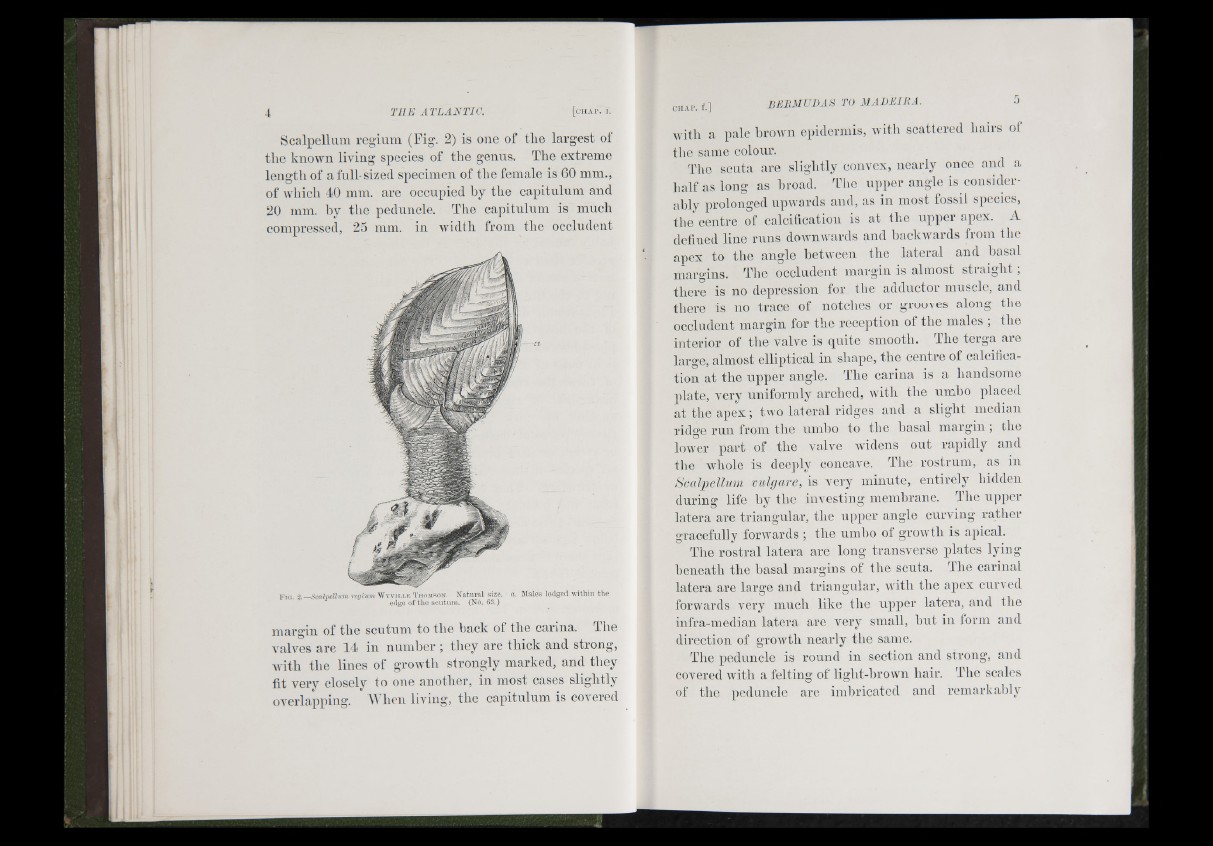
Scalpellum regium (Fig. 2) is one of tlie largest of
the known living species of the genus. The extreme
length of a full-sized specimen of the female is 60 mm.,
of wliich 40 mm. are occupied hy the capitulnm and
20 mm. hy the peduncle. The capitulnm is much
compressed, 25 mm. in width from the occludent
Kig 2 .—Scaiweliitm i'cgiiim AVYvir.LE Thomson. N a tu ra l size. a. Males lodged within the
edge or th e scutum. (No. 63.)
margin of the scutum to the hack of the carina. The
valves are 14 in number ; they are thick and strong,
with the lines of growth strongly marked, and they
fit very closely to one another, in most cases slightly
overlapping. AVheii living, the capitnlum is covered
Avith a pale hroAvn epidermis, with scattered hairs ot
the same colour.
The scuta are slightly convex, nearly once and a
half as long as hroad. The upper angle is considerably
prolonged upAvards and, as in most iossil species,
the centre of calcification is at the upper apex. A
defined line runs doAViiAvards and backwards Irom the
apex to the angle hetAveen the lateral and basal
margins. The occludent margin is almost stic iig h t,
there is no depression for the adductor muscle, and
there is no trace of notches or grooves along the
occludent margin for the reception of the males ; the
interior of the valve is quite smooth. The terga are
large, almost elliptical in shape, the centre of calcitica-
tion at the upper angle. The carina is a handsome
plate, very uniformly arched, with the umbo placed
at the apex; two lateral ridges and a slight median
ridge ru n from the umho to the basal margin ; the
loAver pa rt of the valve Avidens out rapidly and
the Avhole is deeply concave. The rostrum, as in
Scalpellum vulgare, is A’ery minute, entirely hidden
during life hy the investing membrane. The upper
latera are triangular, the upper angle curving rather
gracefully forwards ; the umbo of groAvth is apical.
The rostral latera are long transverse j)lates lying
beneath the basal margins of the scuta. The carinal
latera are large and triangular, AAuth the apex curved
forwards A’ery much like the upper latera, and the
infra-median latera arc very small, hut in lorm and
direction of growth nearly the same.
The peduncle is round in section and strong, and
covered with a felting of light-hroAvn hair. The scales
of the peduncle arc imhricatcd and remarkably